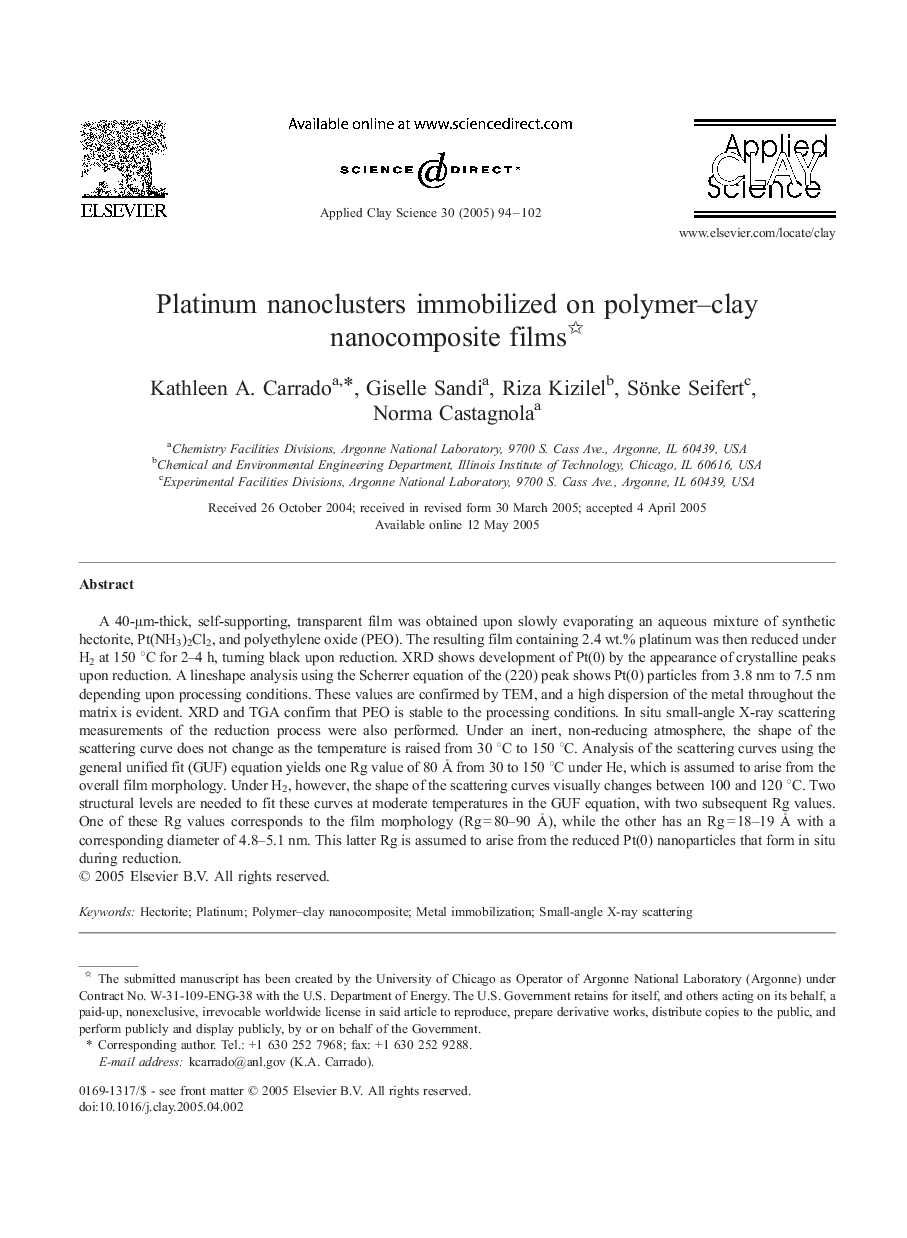| Article ID | Journal | Published Year | Pages | File Type |
|---|---|---|---|---|
| 10676970 | Applied Clay Science | 2005 | 9 Pages |
Abstract
A 40-μm-thick, self-supporting, transparent film was obtained upon slowly evaporating an aqueous mixture of synthetic hectorite, Pt(NH3)2Cl2, and polyethylene oxide (PEO). The resulting film containing 2.4 wt.% platinum was then reduced under H2 at 150 °C for 2-4 h, turning black upon reduction. XRD shows development of Pt(0) by the appearance of crystalline peaks upon reduction. A lineshape analysis using the Scherrer equation of the (220) peak shows Pt(0) particles from 3.8 nm to 7.5 nm depending upon processing conditions. These values are confirmed by TEM, and a high dispersion of the metal throughout the matrix is evident. XRD and TGA confirm that PEO is stable to the processing conditions. In situ small-angle X-ray scattering measurements of the reduction process were also performed. Under an inert, non-reducing atmosphere, the shape of the scattering curve does not change as the temperature is raised from 30 °C to 150 °C. Analysis of the scattering curves using the general unified fit (GUF) equation yields one Rg value of 80 Ã
from 30 to 150 °C under He, which is assumed to arise from the overall film morphology. Under H2, however, the shape of the scattering curves visually changes between 100 and 120 °C. Two structural levels are needed to fit these curves at moderate temperatures in the GUF equation, with two subsequent Rg values. One of these Rg values corresponds to the film morphology (Rg = 80-90 Ã
), while the other has an Rg = 18-19 Ã
with a corresponding diameter of 4.8-5.1 nm. This latter Rg is assumed to arise from the reduced Pt(0) nanoparticles that form in situ during reduction.
Keywords
Related Topics
Physical Sciences and Engineering
Earth and Planetary Sciences
Geochemistry and Petrology
Authors
Kathleen A. Carrado, Giselle Sandi, Riza Kizilel, Sönke Seifert, Norma Castagnola,
